You are in the business of expertise. Whether you run a cutting-edge digital agency, a specialized consulting firm, or a niche B2B service company, your product is the time, knowledge, and talent of your people.
But here's the painful reality: the better you get, the more complicated things become.
The problem for every growing service business is that scaling client work means scaling administrative friction.
You're:
- Constantly juggling multiple clients
- Managing project scope creep
- Struggling to accurately forecast resource allocation
- Losing billable hours to manual time tracking and decentralized communication
The agitation hits when your firm wins a major account, but the internal chaos prevents you from delivering on your promise. Miscommunication leads to scope creep. Inaccurate time logs hide true project costs.
And your most valuable asset, your team's billable time, is spent on non-billable, low-value admin. Every hour spent manually compiling client reports is an hour not spent on high-value delivery.
Clients demand transparency, speed, and consistent quality. If your internal systems are lagging, your client satisfaction and your precious retention rate will be the first to suffer. The promise of scaling your service business quickly turns into the reality of managing an unsustainable, highly manual operation.
But there is a solution: a strategic, end-to-end operational framework known as professional services automation.
What Is Professional Services Automation (PSA)?
Professional Services Automation (PSA) is an integrated system designed to automate and manage the core business processes of a service organization, encompassing project delivery, client relationship management, resource allocation, and financial reporting, all within a centralized platform.
Unlike generic project management software, a PSA solution is purpose-built for businesses where time is the primary commodity, such as consulting firms, agencies, and law firms. It addresses the unique challenges of managing billable hours, utilization rates, and project profitability across dozens or hundreds of concurrent projects.
Why Professional Services Need Automation Now

In a world where clients expect instant updates and perfect execution, communication delays and reporting errors are unacceptable. The right professional services automation system transforms client communication from a time drain into a value-added service.
Client management automation facilitates:
- Faster Updates and Transparency: Automated alerts and client-facing dashboards provide real-time visibility into project status, milestones, and budget consumption, reducing the need for constant client status requests.
- Reduced Misalignment: Automated reminders, triggered by project status changes or scheduled tasks, ensure your team and the client are always synchronized on next steps and deadlines.
- Engaged Clients: By providing clear, immediate, and accessible information, clients feel informed and engaged throughout the project lifecycle, which is the foundation of long-term retention.
This enhanced transparency, built on efficient client management automation, increases client satisfaction and transforms every engagement into a reference case.
Higher Profitability
Profitability in a service business is defined by the efficient use of your human capital. If you don't know who is doing what, for how long, and for which client, you can't accurately price your services or maximize your margins.
Professional services automation provides the data and control necessary for significant financial gains:
- Real-Time Tracking of Billable Hours and Utilization Rates: Instant visibility into how resources are being used prevents under-utilization (wasted capacity) and over-servicing (eroded margins).
- Accurate Resource Forecasting: By analyzing the current workload, skill gaps, and project timelines, the system helps prevent the expensive scramble of over-hiring or outsourcing in a panic.
- Reduced Administrative Overhead: Automating tasks like report generation, approval routing, and data entry frees up highly-paid project managers and consultants from low-value admin, directly increasing billable time and project margins.
The ability of consulting automation to enforce discipline around time and cost tracking is what turns a good project into a great one financially.
Scalable Service Delivery
You want to scale your revenue without proportionally scaling your overhead, and you want to ensure that your tenth client receives the same quality as your first. This is where standardized, scalable project automation is indispensable.
Service delivery automation ensures:
- Templates and Reusable Workflows: New projects are launched using standardized templates, automatically pre-populating tasks, milestones, and required resources, helping teams take on more projects with consistent quality.
- Centralized Reporting and Metrics: Automated data collection ensures that all clients are measured against the same standards, making it easier to identify and replicate successful delivery methods across the firm.
- Reduced Training Time: New team members onboard faster because the workflows are already baked into the system, enabling rapid deployment of resources on new engagements.
Service delivery automation is the mechanism that allows your firm to grow its capacity and maintain exceptional quality simultaneously.
Key Components of a PSA System

A robust professional services automation solution must offer a unified view across all stages of the service lifecycle.
While various PSA products offer different features, the most effective systems integrate these core components:
- Project Management: Tools for defining scope, scheduling tasks, managing dependencies, and tracking progress against baselines.
- Resource Management: Visibility into resource capacity, skill sets, planned utilization, and future needs is crucial for preventing burnout and maximizing efficiency.
- Time and Expense Tracking: Simple, accurate, and automated methods for employees to log billable and non-billable time, ensuring compliance and accurate invoicing.
- Client Communication: Integrated portals or automated triggers for sharing status updates, documents, and key project metrics with the client.
- Financials and Reporting: Automatic generation of invoices based on approved time/expenses and real-time dashboards showing project margins, utilization, and revenue forecasting.
To demonstrate how the component parts of a comprehensive professional services automation system work together, consider the workflow from Sales to Delivery:
|
PSA Component |
Purpose in the Service Lifecycle |
Impact on Margins |
|
CRM Integration |
Automatically creates a project stub when a proposal is signed. |
Reduces setup time; ensures revenue data is accurate from the start. |
|
Resource Management |
Maps project requirements to available team capacity and skill sets. |
Maximizes billable utilization and prevents over-servicing. |
|
Time & Expense Tracking |
Captures all billable activity accurately and quickly for invoicing. |
Project automation ensures zero leakage of billable hours. |
|
Financial Reporting |
Calculates real-time project margin and flags potential cost overruns. |
Drives proactive financial control, highlighting areas for optimization. |
Using this kind of connected system ensures your entire organization operates under a single source of truth, eliminating the friction and data silos that plague fragmented service businesses.
The PSA Implementation Process

Implementing professional services automation can feel daunting, but when approached methodically, it becomes a strategic business transformation. You can't just install the software; you must redefine your operational playbook.
The following steps provide a structured approach to deploying consulting automation successfully:
Assess Existing Workflows
Conduct a ruthless audit of every stage of your current client lifecycle. Identify where administrative time is wasted, where data is manually transferred between systems, and which manual bottlenecks slow down delivery or communication.
Select the Right PSA Tool
Choose a platform based on your firm's size, complexity, and specialized needs. Consider its ability to handle your specific billing models (fixed-price, hourly, retainer) and its integration ecosystem (does it play well with your existing accounting or CRM software?).
Integrate Core Systems
Your CRM, time tracking, and invoicing software must seamlessly sync with the PSA. For instance, linking your sales pipeline data to your resource allocation ensures that project forecasting is proactive, not reactive. You might consider leveraging tools that streamline digital content management or exploring how ChatGPT integration can automate internal communications.
Train Teams and Clients
Successful adoption relies on buy-in. Train your team on the new workflows, emphasizing why accurate time logging and project updates are crucial to their success and the firm's profitability. Crucially, set expectations with clients on how to use their automated dashboard for updates.
Measure Results and Refine
Focus on measuring the metrics that matter most (detailed in the next section), such as utilization rate and billable margin. Use the data to continuously refine workflows and optimize your pricing models.
High-Impact Automation Use Cases for Professional Services

The true power of professional services automation is realized when you move beyond basic task management and leverage the integrated system for end-to-end efficiency.
Here's a closer look.
Project Automation
When a sale closes, the PSA automatically creates the project structure, assigns initial tasks, and sends calendar invites to the core team based on pre-set service templates. Project automation monitors resource capacity and alerts project managers when a team member is projected to be over-utilized or under-utilized in the coming weeks.
Automated routing of tasks to the next team member upon completion of a prior step (e.g., design handoff triggers development kickoff) ensures continuous flow without manual follow-up.
Client Management Automation
Are you tired of constantly answering client status inquiries and spending non-billable time on communication? Client management automation is the answer! It ensures consistent communication, giving you back valuable time.
Imagine this: your professional services automation system automatically compiles all the progress data from time logs and task updates. Then, it generates a weekly or daily client status email or dashboard update for you! This means your clients are always in the loop without you lifting a finger.
But it doesn't stop there. Once a project is complete or you hit a key milestone, the system automatically triggers important surveys like NPS or CSAT. This is a fantastic way to gather vital feedback quickly and improve your services right away.
And what about those payment deadlines? Automated reminders are sent directly to your client as the payment date approaches. This dramatically improves your collections and keeps your cash flow healthy.
For even more ideas on streamlining this process, you might want to explore the power of marketing automation.
Service Delivery Automation
This leverages the central platform to maintain quality and standardization across your portfolio.
Quality Assurance Checklists: Service delivery automation requires the completion of standardized checklists (e.g., "final SEO review done," "code testing complete") before a project can be marked as complete, enforcing quality standards.
Template Refinement
Automated tracking of the "most successful" project templates (highest margin, highest satisfaction) allows the system to prioritize the use of those workflows for new engagements, driving better, faster outcomes across all teams.
Consulting & Reporting Automation
This function turns raw data into strategic insights for both you and your client. The system pulls real-time project and financial data to automatically generate comprehensive reports on budget usage, timeline adherence, and milestone completion.
Clients gain access to a secure, personalized dashboard where they can see their project's progress, budget burn rate, and key performance indicators instantly.
The ultimate outcome of efficient consulting automation is stronger client trust, as they are no longer left guessing about progress, and a measurable ROI for your business through optimized internal reporting.
If your firm offers specific technical services like web development consulting, automating reporting based on technical metrics is a game-changer.
Measuring Success: The Metrics That Matter

If you can't measure it, you can't manage it. The primary value of professional services automation lies in its ability to generate high-impact, actionable data in real-time.
Forget vanity metrics; focus on these core indicators of success:
- Profit Margin Per Project: The ultimate measure of success. The PSA should automatically calculate this by comparing total project revenue against actual time and expense costs, ensuring you know exactly where you are making or losing money.
- Utilization Rate (Billable vs. Non-Billable Hours): The percentage of an employee's total available time that is spent on billable work. A high utilization rate is the clearest indicator of effective resource management and high productivity.
- Client Satisfaction (via NPS or CSAT Automation): Automated survey distribution and analysis ensure you capture feedback quickly and consistently, tying service quality directly to operational performance.
- Delivery Cycle Time: The total time elapsed from project kickoff to completion. Shorter cycle times typically mean higher margins and faster cash flow.
- Revenue Per Employee: A critical measure of the efficiency and scalability of your firm, showing how effectively your human capital is being deployed across the firm.
By tracking these metrics, your professional services automation system stops being merely a tool and starts functioning as your firm's strategic cockpit, guiding your pricing, hiring, and business development decisions.
Common Pitfalls and How to Avoid Them
Even with the best planning, the journey to full professional services automation has risks. Knowing these common pitfalls can help you navigate the process safely.
Here are the three most common mistakes companies make:
|
Challenge |
Why It's a Problem |
Solution |
|
Over-automation Without Human Oversight |
Client communication becomes robotic and impersonal |
Keep human involvement in key touchpoints (kickoff, milestones, sensitive conversations). Let automation handle scheduling and reporting — not relationship management. |
|
Failing to Align PSA Goals with Profitability Metrics |
Tracks activity without connecting it to revenue, margin, or forecasting — missing the core financial value of automation |
Select PSA tools that prioritize billable margin, utilization, and revenue forecasting as primary reporting metrics. |
|
Lack of Team Adoption or Unclear Workflows |
PSA data becomes inaccurate or incomplete because the team doesn't use the system properly |
Create simple, enforced workflows and explain how automation supports efficiency and firm success. |
Ultimately, the solution to all these pitfalls is ensuring your service business automation is kept aligned with service excellence, not just speed. The system should empower your team to be better consultants and managers, not just faster robots.
Professional Services Automation to Help Your Business Flourish
Ready to move beyond basic project tracking and implement a full professional services automation ecosystem that fundamentally transforms your profitability?
Contact us to see how you can streamline your business processes and witness your bottom line soar!

Garreth Aspeling
Garreth has 6 years of experience crafting compelling SEO-based blog posts and articles for various audiences. From cryptocurrency to SaaS and everything in between, Garreth always creates high-quality content for his clients. He is also engrossed in books, hiking trails, and spending time with loved ones.











2.png)
2.png)









